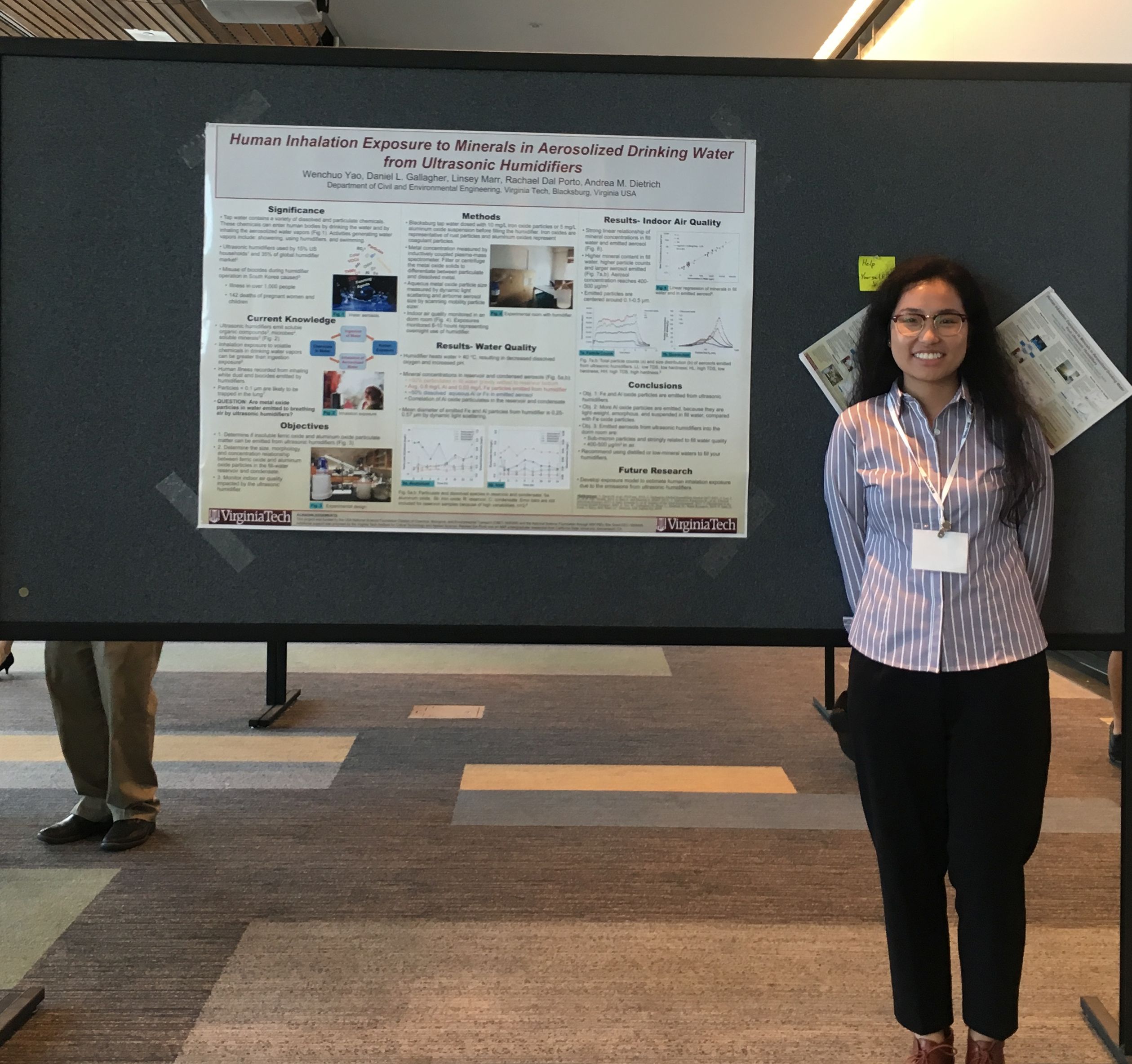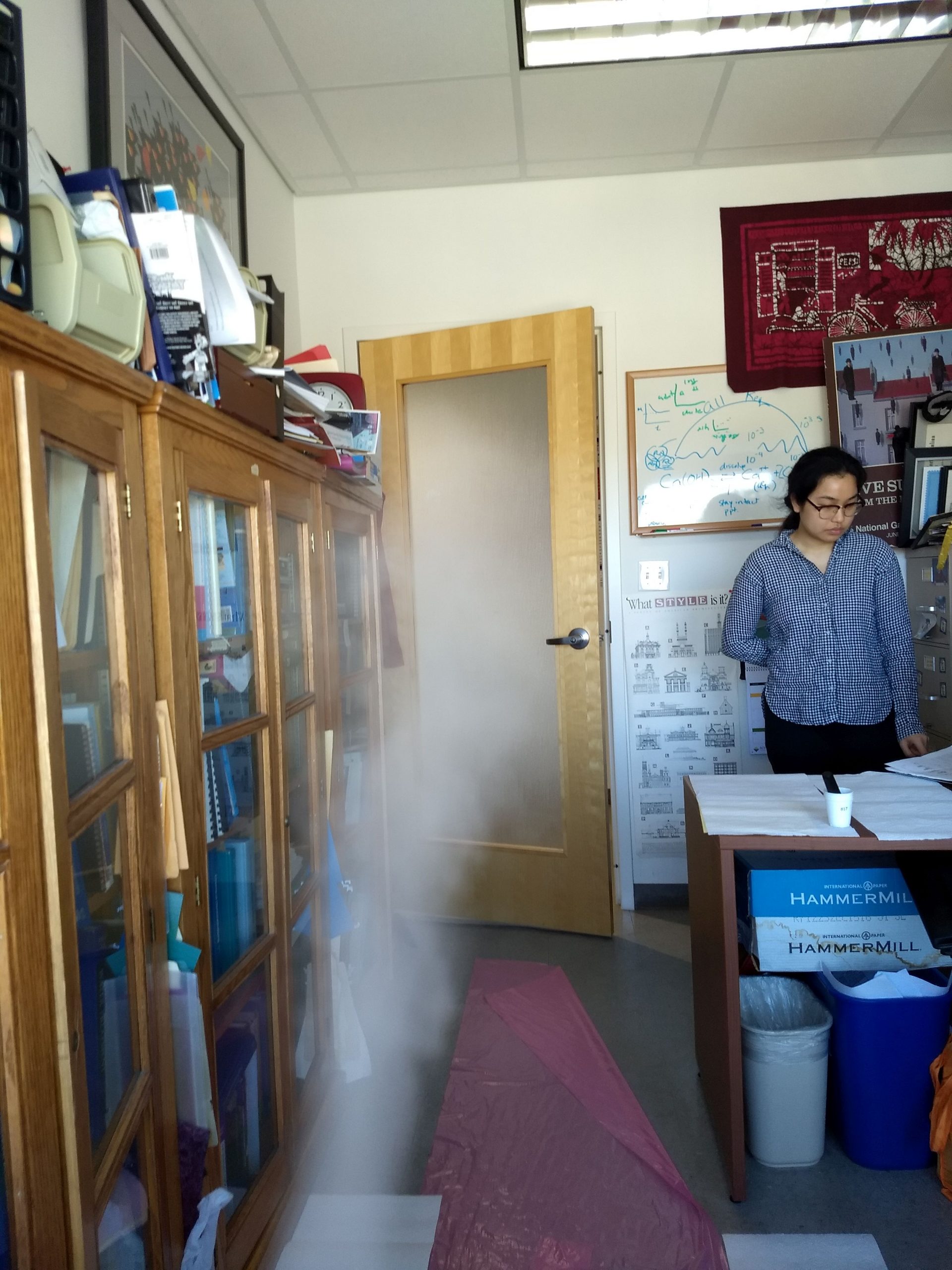When you use water, what components enter the air you breathe?

By Wenchuo Yao; PhD student of Water INTERface IGEP and Department of Civil & Environmental Engineering at Virginia Tech; Advisor: Dr. Dietrich
Conference Presentation: Human Inhalation Exposure to Minerals in Aerosolized Drinking Water from Ultrasonic Humidifiers
Presented at Virginia AWWA and WEA Water Jam, 2019 Annual International Virginia Beach, VA, USA, September, 2019. Water JAM is oriented to the water and wastewater industrial communities, and includes research presentations related to water and wastewater treatment.
I was selected as one of the eight presenters for a section called Young Professional Fresh Ideas Poster Contest. Eight posters contained four from water research and four from wastewater research. My research focused on the air-water interface ,or the contamination of breathing air from components in drinking water. I specifically study emissions from ultrasonic humidifiers and the potential adverse health effects to humans inhaling the emitted particles. After a 10-minute presentation to the judges, they asked about the metal concentration in Blacksburg, VA tap water since it was a focus of my research. Iron and aluminum oxide particles were used in my study. Even though iron and aluminum levels were low in Blacksburg tap water, unexpected contamination could happen when rust corrodes from water distribution pipes or improper treatment results in the coagulant alum being in the drinking water.

Another interesting question I had was how volatile organic chemicals (VOCs) in humidifiers transport or behave. Shower models to simulate the inhalation exposure to VOCs were studied before, and greater inhalation dosage than ingestion dosage was found for VOCs based on an adult drinking 2 l of water a day and taking a 15 minute shower. It would be challenging to perform experiments in actual office or dorm rooms with VOCs added into the ultrasonic humidifiers, because the VOCs may have adverse health effects and they may sorb to materials in the room. VOCs produced from fill water in ultrasonic humidifiers will be an important and interesting topic for future studies. The selection of VOCs and the characterization method must be carefully designed.
I am very thankful for this opportunity to present my research to people in the industry community and hear their comments.


